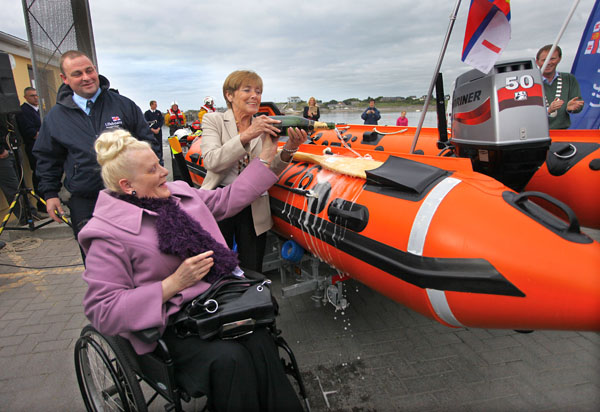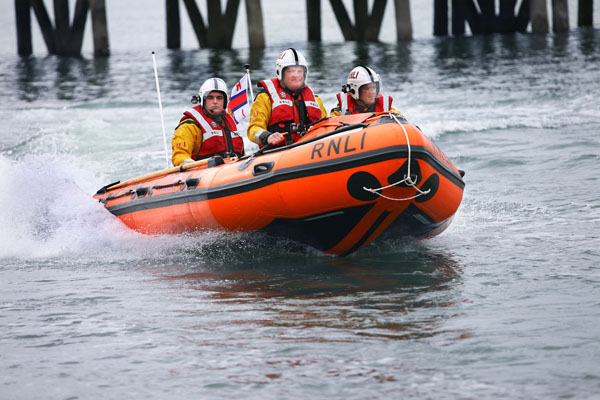Displaying items by tag: Bradley and Sonya
Fenit Name New Lifeboat in Memory of Bangor Couple
A brand new RNLI inshore lifeboat was officially named 'Bradley and Sonya' during a moving ceremony on Saturday 25th September at Fenit which is located on north side of Tralee Bay on the far south west coast of Ireland. The new D class lifeboat was named in memory of a young couple, Bradley and Sonya Burns from Bangor who were lifeboat volunteers and who died within 10 months of each other in 2006.
Volunteer lifeboat crew with Bangor RNLI raised £34027.48 to fund the lifeboat as a tribute to the young couple.The lifeboat was named by Mrs Mary Connolly and Mrs Eileen Savage, the mothers of Sonya and Bradley, while Sonya's sister Judy Connolly and Bangor lifeboats Senior Helmsman Kyle Marshall delivered the lifeboat into the care of Fenit RNLI. Fourteen members of Bangor lifeboat crew attended the ceremony along with members of the couple's family and lifeboat volunteers from around the coast.
Speaking during the ceremony Judy Connolly said, "Whilst we will never forget Bradley and my sister Sonya it is some comfort to know their legacy lives on, doing what they did so well – working to save lives at sea. We are delighted that this modern new lifeboat will make a real difference to the search and rescue capability in the Kerry area. Tragedy is never far from the sea and I do hope that it will be the instrument to save many lives."
Lifeboat Operations Manager with Fenit RNLI Gerard O'Donnell added, "We are extremely grateful to the crew at Bangor lifeboat station for their generosity in funding the new lifeboat. On behalf of the lifeboat crew in Fenit I offer our sincere thanks. This improved lifeboat will allow our volunteer crews to respond more quickly in emergencies and may well make the difference between life and death for someone in trouble in the water. "
Kyle Marshall, Senior Helmsman on Bangor lifeboat commented "It is a truly fitting honour and legacy to the memory of our dear friends Bradley and Sonya; they gave so much to the RNLI." Kyle went on to say "The generosity and support from the people of Bangor, from others further afield and from within the RNLI family has been overwhelming. So many individual people, groups and companies have selflessly given of their time, effort and money to fund this new Fenit lifeboat. We at RNLI Bangor Lifeboat wish to express our heartfelt thanks to everyone who made the funding of this new lifeboat possible"
The Bradley and Sonya lifeboat will join Fenit's all weather Trent class lifeboat Robert Hywell Jones Williams.

Mrs. Mary Connolly (Sonya's mother) and Mrs. Eileen Savage (Bradley's mother) name RNLI Fenit lifeboat 'Bradley and Sonya'

Fenit Lifeboat in action. The RNLI D class lifeboat is 5 metres in length and has a maximum speed of 25 knots. Photos: Valerie O'Sullivan
Related Safety posts
RNLI Lifeboats in Ireland
Safety News
Rescue News from RNLI Lifeboats in Ireland
Coast Guard News from Ireland
Water Safety News from Ireland
Marine Casualty Investigation Board News
Marine Warnings





























































